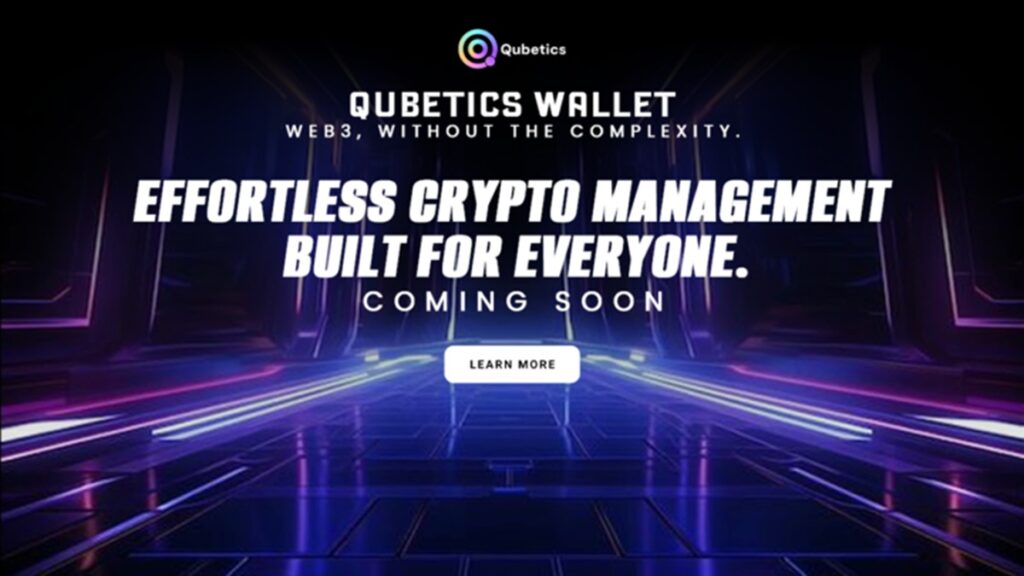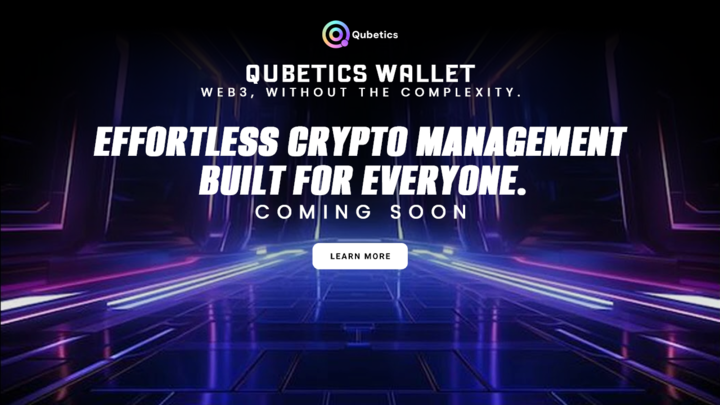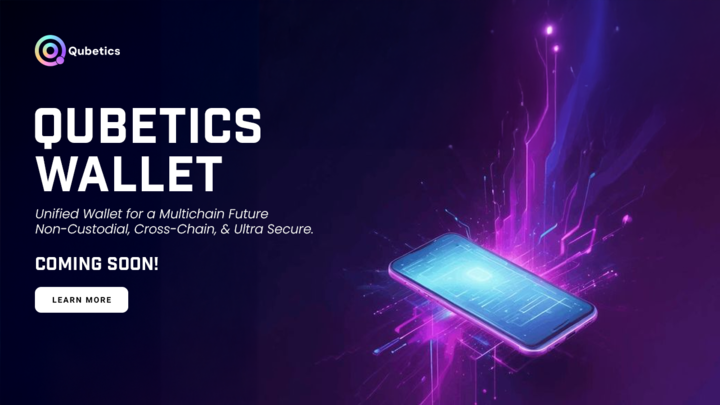Franck Muller, the Swiss luxury watchmaker known for its high-end innovation, just shook up the blockchain space by launching a Web3 watch on the Solana network. This isn’t just about timekeeping—this move marks Solana’s deeper reach into lifestyle and identity-driven blockchain experiences. But as flashy as it sounds, the bigger question is: does this signal utility, or is it just surface-level hype? Meanwhile, Mantra is making major headlines with its RWA tokenization partnership in the UAE, and Qubetics is rapidly selling out of its presale tokens thanks to real-world cross-chain application and a Web3 infrastructure focus.
And that’s where things get interesting. Qubetics ($TICS), the first Web3 aggregator designed to unify the fragmented blockchain world, is targeting something much more fundamental—cross-border transaction fluidity across chains. By abstracting blockchain complexity for both developers and businesses, it tackles one of crypto’s oldest roadblocks. With a growing tally of early adopters and a presale that spikes weekly, Qubetics is now standing shoulder-to-shoulder with the biggest narratives in the space—and in some expert circles, it’s already being called one of the best altcoins to invest in now.
Solving Fragmentation: How Qubetics Delivers on Cross-Border Blockchain Utility
Picture a mid-sized e-commerce brand in Austin trying to send supplier payments to partners in Pakistan, Brazil, and Indonesia—each of whom accepts payments through different blockchain networks. Currently, that means managing separate wallets, bridge platforms, and gas tokens. But Qubetics, with its Web3 unification layer, eliminates that headache entirely. It provides a single interface where businesses can send, receive, convert, and verify transactions across Ethereum, Solana, BNB Chain, and beyond—without manual bridging or multiple wallets.
Qubetics’ core engine is built around its Cross-Chain Transaction Framework (CCTF), which is deployed through QubeQode and a seamless developer IDE. These tools empower enterprise teams, fintechs, and even government pilots to create custom transaction routes across supported chains while maintaining compliance layers. Instead of stitching together APIs, devs can drag, drop, and deploy smart contracts that interact with multiple chains simultaneously—crucial for real-world apps like payroll, microfinance, and remittances.
This sort of interoperability isn’t just rare—it’s critical. And in today’s fragmented environment, it’s why analysts, developers, and community members alike are watching Qubetics closely. Its real-world implementation across regions with limited access to traditional finance is precisely what sets it apart as one of the best altcoins to invest in now.
Qubetics Presale ROI Outlook: Why It’s Ranked the Best Altcoins to Invest in Now
The Qubetics presale has now reached Stage 36, with the token priced at $0.3064. With over 514 million $TICS sold, and more than $17.4 million raised from 27,100+ participants, the project has outpaced many mid-cap tokens in terms of early traction. The presale follows a 7-day cycle, ending every Sunday at 12 AM, with a consistent 10% price increase at each stage. That alone has created a sense of strategic urgency among community members keeping tabs on presale momentum.
And the numbers make a powerful case. If someone enters at the current price of $0.3064 and $TICS hits $1 post-presale, the return is 226.32%. But if $TICS climbs to $5, that becomes a staggering 1,531.58% gain. At $6, it’s 1,857.90%, and at $10, we’re talking 3,163.16%. Should it reach $15 post-mainnet, the ROI soars to 4,794.74%. Just to illustrate: a $100 entry at this stage yields over 326 $TICS tokens. If $TICS hits $15, that $100 becomes $4,897. Not bad for a week’s timing.
With the Qubetics mainnet scheduled for launch in Q2 2025, the countdown is on. While meme coins trend and Layer-1s wrestle with congestion, Qubetics is steadily building—and it’s doing so during one of the most well-structured and transparent crypto pre sale events of the year. That’s why this project continues to be categorized among the best altcoins to invest in now by analysts tracking presale ROI and tech potential alike.
Franck Muller’s Solana Integration Signals Institutional Tilt
The recent partnership between Solana and R3, reported by Ledger Insights, marks a shift in how major institutions view blockchain networks. R3, traditionally focused on permissioned enterprise blockchain networks like Corda, has now pivoted toward public blockchains, and Solana is its chosen gateway. This is no minor development—R3 is backed by 45 major banks, and its tech is used in large-scale government and banking systems across the globe.
This transition is rooted in the rising demand for composability and liquidity, areas where public blockchains like Solana hold a clear edge. The partnership intends to allow users to issue regulated financial assets on Solana, using Corda’s infrastructure as a compliance layer. In doing so, it bridges the gap between highly regulated environments and fast-moving public protocols.
What makes this move particularly notable is the potential reach. With R3’s global network of banking partners and Solana’s established DeFi and NFT ecosystems, this fusion could unlock enterprise-grade adoption at scale. That said, the partnership is still in its early stages, and execution will be critical. But for now, this collaboration brings fresh credibility to Solana—and raises its profile again as one of the best altcoins to invest in now, particularly for participants betting on institutional blockchain infrastructure.
Mantra Accelerates RWA Ambitions in UAE Through Partnership with Zand
According to Binance Square, Mantra has announced a major strategic move by partnering with Zand, a licensed digital bank in the UAE. The objective? To roll out regulated tokenized financial products for both institutional and retail use, directly addressing the massive opportunity in Real World Asset (RWA) tokenization.
The partnership will leverage Mantra’s technology to facilitate asset issuance, custody, and settlement via blockchain infrastructure—all under the regulatory scope of the UAE’s Virtual Assets Regulatory Authority (VARA). This matters because RWA tokenization is no longer theoretical—it’s becoming a primary focus for regional governments and financial institutions alike. And Mantra is placing itself directly in that line of fire.
By working with Zand and operating under clear legal guidance, Mantra is building a first-mover advantage in a fast-evolving vertical. If successful, it could set the blueprint for compliant DeFi operations in the MENA region. With tokenized real estate, bonds, and yield-bearing assets on the roadmap, Mantra’s next chapter could carry significant weight—one reason it’s now appearing more frequently on analyst shortlists for the best altcoins to invest in now.
Which Project Stands Out When the Noise Settles?
There’s no shortage of headlines. Solana’s Web3 watch signals cool factor and institutional crossover. Mantra is embedding itself deep into the UAE’s regulated financial tech stack. But it’s Qubetics that’s uniting chains, lowering barriers, and pushing for scalable Web3 infrastructure. Whether you’re a developer, business, or forward-thinking participant, Qubetics delivers across utility, access, and cost efficiency.
With a presale structure built to reward early entry and a clear path to mainnet in Q2 2025, it’s no wonder analysts are calling $TICS one of the best altcoins to invest in now. Between utility, momentum, and the evolving cross-chain landscape, Qubetics isn’t just another presale—it’s poised to be the best crypto presale in today’s market.
For More Information:
Qubetics: https://qubetics.com
Presale: https://buy.qubetics.com/
Twitter: https://x.com/qubetics
FAQs
Why is Qubetics considered one of the best altcoins to invest in now?
Qubetics offers real-world utility through seamless cross-border blockchain transactions and unites multiple chains into a single framework.
How much has Qubetics raised in its current presale stage?
The Qubetics presale has raised over $17.4 million, with 514 million tokens sold to date.
What is driving Mantra’s recent surge in visibility?
Mantra partnered with UAE-regulated digital bank Zand to offer tokenized financial products under VARA’s framework.
Press releases or guest posts published by Crypto Economy have been submitted by companies or their representatives. Crypto Economy is not part of any of these agencies, projects or platforms. At Crypto Economy we do not give investment advice, if you are going to invest in any of the promoted projects you should do your own research.








